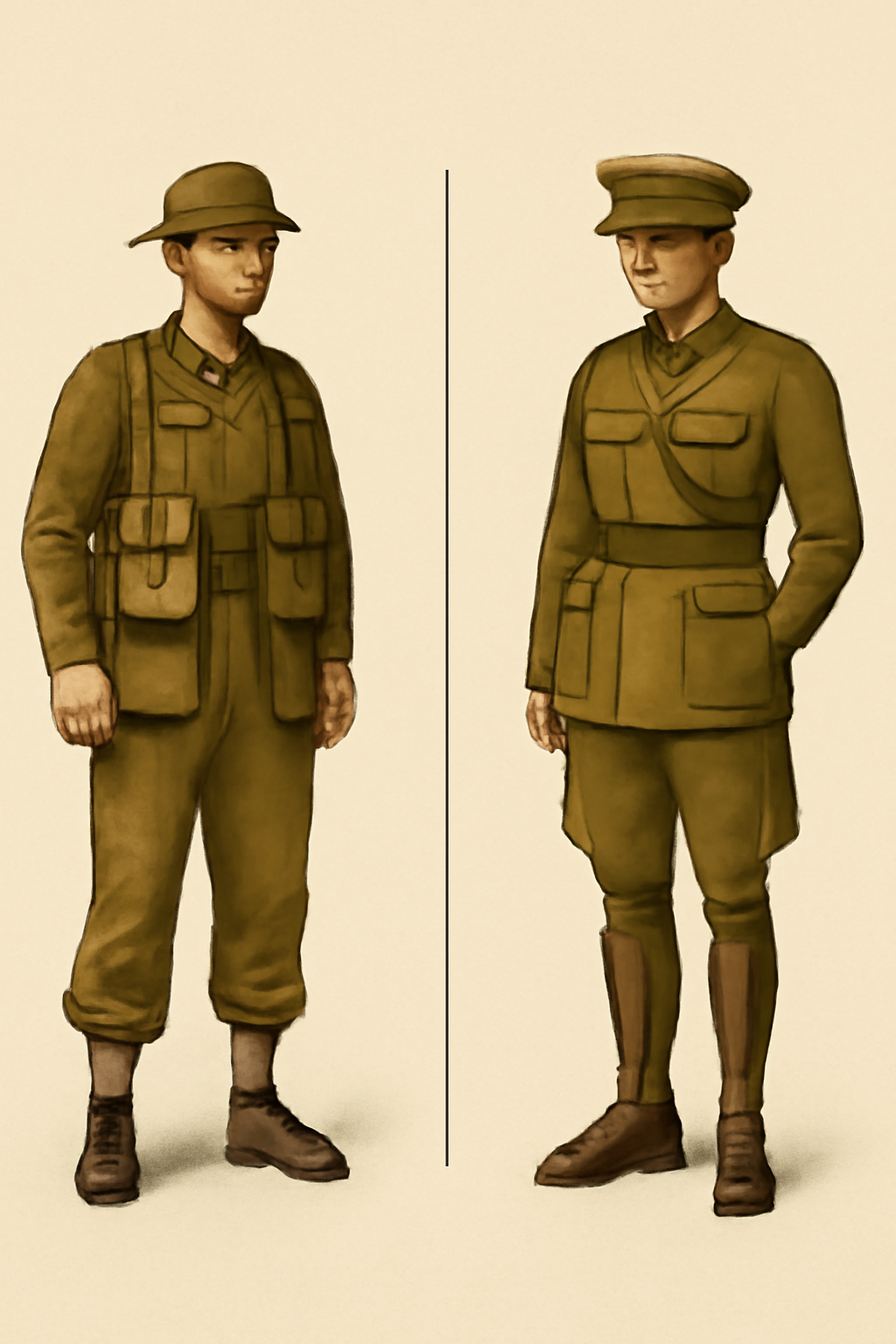
Authentic WW2 British Officer & Soldier Uniforms – A Historical Breakdown
Published on Jun 24, 2025
British WW2 Uniforms: A Timeless Symbol of Courage and Craftsmanship
The uniforms British forces wore during World War II were more than just battlefield attire — they were symbols of duty, resilience, and national identity. From the trenches of Europe to the deserts of North Africa, each piece of clothing told a story of function, tradition, and adaptation. Today, British WW2 uniforms fascinate collectors, reenactors, and history lovers alike.
In this guide, we’ll explore the rich legacy of WW2 British soldier uniforms, take a closer look at WWII British officer uniforms, and understand how they differ from earlier and later periods, such as the Crimean War and the Anglo-Zulu War.
WW2 British Soldier Uniform: Functionality on the Front Lines
The standard WW2 British soldier uniform was a product of necessity. Built for utility and endurance, it balanced comfort with military efficiency.
Key Features of the Soldier Costume (WW2):
- Battle Dress Blouse (1937 pattern): A woollen jacket with pleated pockets, short in length, to allow more mobility.
- Trousers: High-waisted, wool trousers with a concealed pocket for the field dressing.
- Puttees or gaiters: Wrapped around the lower leg for protection and support.
- Helmet: The Mk II steel helmet is often lined with netting or scrim for camouflage.
- Webbing Gear: The 1937 Pattern Web Equipment carried ammo pouches, water bottles, and tools.
These uniforms were designed for global deployment. Whether in Europe’s harsh winters or the humid jungles of Burma, adaptability was key.
WWII British Officer Uniform: Tradition Meets Authority
In contrast to enlisted soldiers, British officers wore uniforms that blended standard issue components with tailored pieces that reflected rank and social standing during World War II.
Notable Differences in Officer Uniforms:
- Service Dress Tunic: Often tailored from finer materials, featuring shoulder rank insignia, brass buttons, and breast pockets.
- Sam Browne Belt: A leather belt with a cross-strap used to carry pistols and swords — a holdover from earlier military tradition.
- Peaked Cap: A formal hat distinguishing officers from enlisted ranks.
- Boots: Higher-grade leather boots, sometimes privately purchased.
The WW2 British officer uniform remains one of the most sought-after items by collectors due to its distinctive style and the historical prestige it represents.
World War 2 Outfits Across Theatres
British military dress evolved to suit the needs of each theatre of war. Under Montgomery's command, a soldier serving in North Africa would wear khaki drill shorts and a bush shirt. In contrast, one in Italy might wear battledress trousers with a lighter field jacket.
Variations by Region:
- Desert Campaigns: Lightweight khaki drill uniforms.
- European Theatre: Standard woolen battledress.
- Far East: Jungle greens and mosquito netting.
Understanding these variations is key for reenactors and collectors who aim for authenticity in their World War 2 outfits.
From Crimean War to WW2: Evolution of British Military Dress
To appreciate WW2 British uniforms, it’s essential to understand their evolution.
Crimean War British Uniforms:
- Bright red tunics and white crossbelts were standard.
- Uniforms favoured style over practicality, often ill-suited for the battlefield.
- Headgear included shakos and bearskin caps.
This era marked the last primary use of flamboyant military dress before the shift toward practicality in later wars.
British Zulu War Uniforms: Colonial Era Precision
The Anglo-Zulu War uniforms of 1879 represented another phase in British military attire.
Key Elements:
- Red serge tunics remained standard, symbolizing British imperial power.
- Foreign Service helmets (white pith helmets): Offered protection from the sun.
- Canvas gaiters and cartridge boxes for foot soldiers.
These uniforms are often remembered from depictions in films like Zulu (1964), but their historical significance goes deeper—they highlight a transitional period before full mechanization and modern tactics of the 20th century.
Collecting and Reenacting: Finding Quality Reproductions
Authenticity matters to collectors and reenactors. At Paddelaters.com, we offer historically accurate WW2 British officer uniforms, soldier costumes, and outfits from earlier periods, such as the Crimean War and Anglo-Zulu War.
Why Choose Authentic Reproductions?
- Attention to Detail: Our uniforms feature period-correct stitching, fabrics, and hardware.
- Comfort and Durability: Built to last through reenactments and displays.
- Custom Sizing Available: For a perfect fit and a professional look.
Whether creating a museum display, participating in a living history event, or adding to a personal collection, investing in quality ensures your uniform honours the past.
Final Thoughts: The Legacy Lives On
British WW2 uniforms are more than just vintage garments — they are time capsules that tell stories of bravery, leadership, and global conflict. From the rugged soldier costume to the refined officer’s tunic, these outfits connect us to a defining historical moment.
Explore our curated collection of historically accurate uniforms at Paddelaters.com to own a piece of that legacy. We don’t just sell military attire — we preserve history, one stitch at a time.
